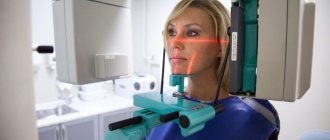Published 06/21/2019
Cervical cancer is the leading cause of death in women aged 30 to 35 years. At the same time, a woman often cannot detect the pathology on her own, experiencing minor complaints.
The cervix has a special anatomical structure. It is designed in such a way that the gynecologist can only see gross changes in the cervix, which, as a rule, are an indicator of an advanced process. A more detailed examination of the cervix for pathology is possible only under high magnification, which is precisely provided by a device called a colposcope.
Types of colposcopy
- Simple - without the use of medications, it has no particular clinical significance.
- Advanced - the use of various special tests to examine the mucous membrane of the cervix.
A simple one allows you to visually assess the surface of the cervix, its shape and size, examine the area of the cervical canal, and determine the border between flat and tall columnar epithelium.
The technique for performing simple and extended colposcopy differs in that during extended colposcopy, additional treatment of the cervix is carried out with a solution of acetic acid and Lugol's solution. These methods help to distinguish normal vessels from pathologically altered ones, and also limit the foci of affected epithelium. This subsequently makes it easier to select a biopsy site.

Indications and contraindications
In recent years, colposcopy has been included in the list of mandatory tests for pregnant women. This is due to the high risk of developing gynecological pathologies and the fact that most women turn to a gynecologist with an unplanned pregnancy. In addition, from the moment of fertilization, the immune defense of the female body is significantly reduced, which can provoke the development of previously undetected disorders.
Colposcopic examination is prescribed not only for suspected pathologies of the reproductive organs, but also for preventive purposes. This will ensure that there are no changes that could affect natural delivery or cause complications during childbirth.
There are no contraindications to examining the uterine cervix with a colposcope. The procedure can be prescribed at any stage of gestation. It is absolutely safe and does not affect the development of the fetus and the health of the expectant mother. If there is a threat of interruption, colposcopy may be postponed until the increased tone of the uterus normalizes and the bleeding disappears. Also, colposcopic examination is not carried out for women with individual intolerance to auxiliary solutions that are used for extended colposcopy (iodine, acetic acid).
Indications for colposcopy
Indications for colposcopy:
- unfavorable cellular changes according to cervical smear data;
- suspected cancer and other diseases, such as genital warts;
- positive test for human papillomavirus;
- bleeding after sexual intercourse in women over 40 years of age;
- bleeding outside of menstruation;
- chronic inflammatory processes of the cervix;
- vaginal discharge and itching;
- prolonged pain in the lower abdomen.
Reviews of doctors providing the service - Colposcopy
Many thanks to Inna Vasilievna Kardava for her sensitivity, professionalism, and high level of medical care.
Low bow to you. With great respect, your patient, Olga Anatolyevna Z. Read full review Olga Anatolyevna Z
26.11.2020
I would like to express my gratitude to the gynecologist KARDAVA INNA VASILIEVNA. I had an appointment with a gynecologist on November 26, 2020. Thanks to the Doctor for his professionalism, participation, and excellent attitude towards the patient. Low bow to you. Read full review
Olga Anatolyevna Z
26.11.2020
The procedure takes an average of 10-15 minutes and allows you to identify very small (imperceptible when viewed with the naked eye) areas of altered epithelium and identify loci for biopsy.
A biopsy can be performed immediately after an extended colposcopy or at the next examination if individual circumstances require it.
The biopsy is performed after anesthesia with lidocaine in the form of irrigation using the Surgitron apparatus (radio wave surgery). After the biopsy, abstinence from sexual activity and the use of epithelizing vaginal suppositories are recommended.
Cervical cancer
Cervical cancer is one of the few types of malignant tumors that can be detected in time at a very early stage. Colposcopy allows you to detect the presence of degenerated cells - dysplasia or the so-called precancerous condition. Every woman is at risk, so colposcopy is recommended for everyone.
A contraindication for the procedure may be a woman’s refusal. Extended colposcopy should be performed after clarifying the allergic history, in particular, reaction to iodine.
What is colposcopy
This is a diagnostic method for examining the mucous membrane of the vulva, vagina and cervix using a special optical device - a colposcope. The procedure is a modern, painless and low-cost method for diagnosing the cervix. When identifying pathologies of the female reproductive system, colposcopy is sometimes indispensable.
Colposcopy allows you to identify malignant, precancerous and benign pathologies of the cervix. Moreover, during colposcopy, the gynecologist can additionally take a scraping for cytological analysis if suspicions arise during the examination or the woman is at risk for cancer.
Many girls who have cervical erosion without reminders turn to a gynecologist and undergo the necessary examination. Every girl should also take care of her health, even in the absence of pathology, at least once a year.
Colposcopy allows you to see minor changes in the cervix, even when at first glance it looks completely healthy. Staining with various dyes helps to identify those pathological changes that cannot be seen during a visual examination of the cervix by a doctor.
Colposcopy during pregnancy
Colposcopy in early pregnancy is performed if the results of a cervical smear are questionable or poor. Its main goal is to diagnose cancer in a timely manner and clarify the tactics for managing the patient before childbirth. Research in later stages (2-3 trimesters) is not carried out due to technical difficulties and the risk of complications (infection, bleeding).
Colposcopy during pregnancy is more technically complex and less comfortable for the patient. No preparation for the study is required. Most often, only a simple colposcopy is performed, which does not pose a danger to the pregnant woman and the fetus. If necessary, some time after birth, a repeat colposcopy with a biopsy is performed.

Is colposcopy performed on pregnant women?
Gynecologists advise carrying out this examination before conceiving a child. If indications for research are identified during pregnancy, this may mean that conception occurred against the background of a developing disease. Although this is not always confirmed.
This is a safe procedure if you follow the main rules of this examination during pregnancy:
- Do not carry it out in the early stages, as there is a high risk of spontaneous abortion;
- A biopsy is taken without fail if a malignant tumor is suspected;
- You should not be afraid of bloody discharge within 5 days after visiting the doctor, but it should be scanty and not cause severe pain.
Colposcopy during pregnancy not only detects cancerous and precancerous conditions, but also helps to monitor the course of the disease, since not all treatment methods are approved during pregnancy.
Within a few days after the procedure, the patient receives results. The attending physician prescribes vaginal suppositories and other medications that are allowed during pregnancy. For minor deviations, the doctor does not prescribe medications - only regular monitoring. After birth, a repeat examination is scheduled.
Preparation for the procedure
No special preparation is required for colposcopy. The diet and diet are normal.
The following restrictions must be adhered to:
- two days before the test, do not douche or wash yourself with intimate hygiene products;
- use a condom during sexual intercourse;
- stop using suppositories, vaginal tablets and other medications for intravaginal use.
As a rule, colposcopy is painless and there are no complications after it. Sometimes a woman may be bothered by spasmodic pain in the lower abdomen, an increased amount of vaginal discharge or slight bleeding (if material was taken for histological examination during colposcopy).
These symptoms are caused by irritation of the mucous membrane and disappear within 24 hours after the procedure. On the first day or two after the study, doctors recommend avoiding sexual intercourse, the use of intravaginal drugs and tampons.

Features of colposcopy
This procedure is absolutely painless, reminiscent of an examination on a chair; minor unpleasant sensations may appear, which quickly pass.
The patient lies down on a gynecological chair, then the cervix is exposed using a gynecological speculum and a colposcope is brought to the required examination area at a distance of about 30 cm. It is a microscope that is connected to a screen. On the screen, the doctor sees the structural and anatomical parts of the cervix in high resolution. A high-quality enlarged image allows you to distinguish pathology from normality.
The procedure can be performed on any day of the menstrual cycle. The period of the study is individual and depends on the duration of the menstrual cycle, but in some cases, and on the recommendation of a doctor, it is recommended to undergo the procedure before the 10th day of the menstrual cycle. Colposcopy is not possible during menstruation.
Upon examination, the doctor will see whether the cervix is normal or changed. Some types of “erosion” are normal; they require regular examination and do not require “cauterization.” When pathological processes are detected, the gynecologist prescribes a biopsy or tests for bacterial and viral infections.
Analysis of colposcopy results
Normal results of colposcopic examination consists of normal squamous and columnar epithelium, the transformation zone.
If the result is suspicious, additional multiple colposcopic images are taken:
- squamous acid white epithelium (immature metaplastic epithelium turns white after coating with 3% acetic acid due to high core density);
- dense acid-white epithelium;
- small punctures (red dots indicating abnormal, dilated, twisted capillaries);
- rough punctures;
- iodine-negative field (healthy epithelium turns dark after coating with Lugol's solution, a change that remains light/unstained is suspicious and requires targeted biopsy);
- atypical vessels.
The gynecologist analyzes the results of the colposcopy along with the results of the Pap smear and acts in accordance with an expert algorithm. In certain cases, it determines either a new diagnostic tool, or a therapeutic procedure, or a wait-and-see approach (regular examinations).
History of colposcopy
The content of the article
Colposcopy was first used by the German physician Hans Hinzelmann in 1925. He developed this method in search of an effective tool for recognizing cervical cancer, the most common malignant disease of the time. This method was considered impractical, so the search for alternative procedures to detect this malignancy continued.
In the early 1940s, George Papanicolaou demonstrated the potential of cytological screening (Pap smear) as a test for detecting cervical malignancies. At that time, the Pap test almost completely suppressed colposcopy due to its practicality and effectiveness until the 1960s. This was followed by the re-introduction of colposcopy as an additional test for women with abnormal cytological findings.
Today, colposcopy (Greek Colpo - vagina, volume - look) enjoys the status of almost universally recognized method of the most effective examination for women with suspected cervical lesions with malignant potential.









